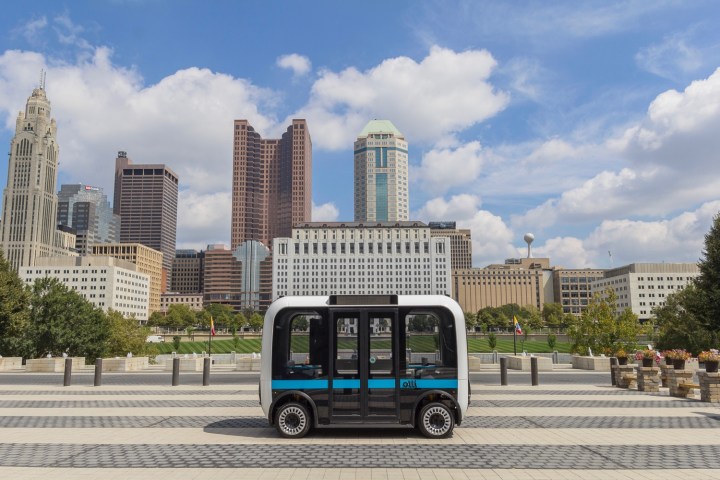
Like many other companies, LM Industries wants to put autonomous vehicles on the streets of world cities. But instead of going the Uber or Waymo model of showing up in a city with its own fleet of vehicles and its own agenda, the company is asking local groups to figure out how they want to use its Olli low-speed autonomous electric shuttles.
LM Industries is launching a “fleet challenge” that invites local governments, companies, and other interested parties to propose three-month use programs for Olli vehicles. The first challenge will be open to entries from the greater Sacramento and Phoenix areas, but LM Industries plans to expand the concept globally. The winner in each city gets what the company calls a “pod” of Ollis (between two and five vehicles) to carry out its plans.
“Autonomous vehicles are known by some people, but are still new to others,” LM Industries CEO Jay Rogers told Digital Trends. That uneven knowledge base made it difficult for the company to deploy is vehicles by simply waiting for groups to raise hands. Some groups would be further along than others, and some would make unrealistic proposals, he said. “That was backwards.”
Instead, the challenge asks interested groups to propose a specific use at a specific location for autonomous vehicles. Rogers said LM Industries chose to start with Sacramento and Phoenix because existing partnerships in those cities could help expedite the process. California and Arizona also have very permissive self-driving car regulations. Entries will be evaluated by a panel of judges including Rep. Doris Matsui of California’s 6th Congressional District (which includes Sacramento) and Sandra Wilson, president and CEO of the Arizona Commerce Authority.
The Olli shuttles look like small boxes on wheels. The electric vehicles have a maximum range of 40 miles, or 25 miles with a full load of passengers and the air conditioning blasting, according to Local Motors, the LM Industries division that builds the vehicles. Local claims to have given over 2,000 demonstration rides in different cities. The company claims the Ollis are fully autonomous, but they operate with a human “steward” onboard for safety reasons.
While they are capable of sharing the road with conventional vehicles, according to LM Industries, Ollis are limited t0 25 mph. Rogers said low-speed operation is a safety feature at this early stage in the development of autonomous-driving technology. Other companies are testing prototype self-driving cars based on normal passenger vehicles, but Rogers said doing too much too soon may lead to incidents like the fatal March 2018 crash involving an Uber autonomous car, that could sour the public on the technology.
“We want a good name for us and our competitors.”


